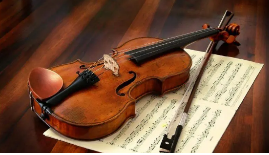In music aesthetic education, the interpretation of “sadness and beauty” has long existed aesthetic feeling, pleasure and sadness
3 min read
From the perspective of aesthetic education psychology, it is of great importance to explore the psychological mechanism of “sadness as beauty” in traditional sad music to reveal the aesthetic education effect of “advocating sadness” in traditional music culture. Because “only by mastering the law of psychological activities in the process of aesthetic education can we choose aesthetic education textbooks or artistic means in a targeted way, guide the situation and teach students according to their aptitude”.
However, in music aesthetic education, there has long been academic debate on the relationship between aesthetic feeling, pleasure and sadness and education in the interpretation of “sorrow and beauty”. Although people do not listen to sad music for the purpose of “sadness”, what is the psychological connection between “sadness” and “beauty” produced by people listening to music? How does this connection distinguish “pleasure” and “beauty” produced by listeners? What is the relationship between the two in terms of psychological mechanism? The research shows that “aesthetic feeling” is the core concept of music aesthetic education, and “pleasure” is an embodied embodiment of individual aesthetic appreciation.
Whether the psychological process of listening to sad music to realize the transformation from “sadness” to “beauty” is “parallel processing” or “paradox” may be the key link to reveal the educational mechanism of “beauty with sadness”. On the basis of previous studies and from the perspective of multidisciplinary integration, et al. proposed the “pleasure conversion theory”. People listen to sad music to realize the psychological transformation from “sadness” to “beauty”, which is regulated by individual “intensity of enjoyment” and affects the processing of aesthetic emotions. Studies have shown that individuals with negative titer bias can realize the release of “sad” experience by listening to sad music, which can produce aesthetic and motivational effects.
In the process of enjoying sad music, the aesthetic experience regulated by music preference and aesthetic judgment gradually changes from negative sad experience to positive pleasure experience with the enhancement of positive emotions, and finally obtains physiological reward and produces incentive effect. This theory provides an important theoretical basis for us to explore the psychological benefits brought by listening to sad music and the psychological mechanism, and provides a way to explain the aesthetic education effect of “taking sadness as beauty”. It has been found that in the “sadness for beauty” of music, the intensity of enjoyment is an important dimension to produce aesthetic experience, which is regulated by individual music preference and listening motivation, and may be an important index to effectively predict the “sadness for beauty”.
Music preference is influenced by cultural specificity, and music preference affects the aesthetic experience of sad music. The evasive motivation of listening is the key link of the realization of individual music aesthetic, which determines the degree of arousal of individual positive emotions. On the other hand, music familiarity may be an important dimension to predict music preference, and influence individual aesthetic judgment, emotional experience and intensity of enjoyment.
In addition, music training enhanced individual musical expertise and musical experience, effectively adjusted the aesthetic judgment of sad music, and enhanced the pleasant experience. Compared with non-musicians, musicians have significant advantages in aesthetic behavioral response and neurophysiological activation. Musical training strengthens their emotional response and aesthetic experience, and enhances the function of musical brain. Although the above research is based on western music culture and explores the behavioral characteristics and neural basis of listening to sad music, it provides behavioral and neurophysiological evidence for us to explore the aesthetic phenomenon of sadness as beauty.






